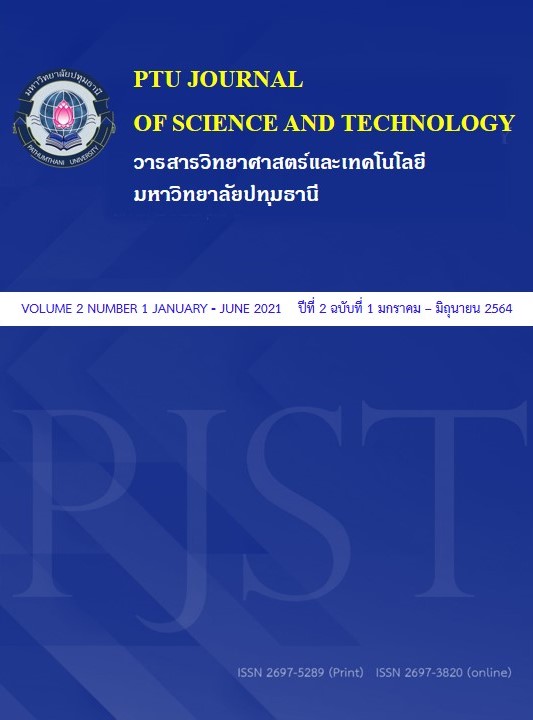Statistics: Significance, Power, Sample Size & Effect Size
Main Article Content
Abstract
Statistics has definitions, data, numbers, symbols, formulas, and figures that make this subject is too difficult to learn and the learners have negative attitudes and block their learning. Statistics is an essential part in researches. The power analysis is the combinations of the four related factors: significance level, power of a test, effect size, and sample size. To understand the power analysis, the learners should begin in order for data, frequency distribution, percentage, measure of central tendency, probability, standard value transformation, sampling distribution, and hypothesis testing. This article used delineation, example, statistics symbols and pictures as needed in order for students or researchers to understand and apply appropriately.
Article Details
ความคิดเห็นและข้อเสนอแนะใดๆ ที่นำเสนอในบทความเป็นของผู้เขียนแต่เพียงผู้เดียว โดยบรรณาธิการ กองบรรณาธิการ และคณะกรรมการวารสารวิทยาศาสตร์และเทคโนโลยี มหาวิทยาลัยปทุมธานี ไม่ได้มีส่วนเกี่ยวข้องแต่อย่างใด มหาวิทยาลัย บรรณาธิการ และกองบรรณาธิการจะไม่รับผิดชอบต่อข้อผิดพลาดหรือผลที่เกิดจากการใช้ข้อมูลที่ปรากฏในวารสารฉบับนี้
References
อาฟีฟี ลาเต๊ะ. (2561). ทัศนคติต่อรายวิชาสถิติของกลุ่มผู้เรียนระดับพื้นฐาน ระดับกลาง และระดับใช้งาน. Veridian E-Journal,Silpakorn University ฉบับภาษาไทย สาขามนุษยศาสตร์สังคมศาสตร์ และศิลปะ. ปีที่ 11 ฉบับที่ 1 เดือนมกราคม –เมษายน 2561 : หน้า 2591-2604.
Annenberg Learner. [Online]. (2020). Against All Odds: Inside Statistics: What Is Statistics? Retrieved from https://www.learner.org/series/against-all-odds-ins ide-statistics/what-is-statistics/
Araujo, P., Froyland, L. (2007), Statistical power and analytical quantification. Journal of Chromatography B. Vol. 847: p. 305-308.
Bluman, A.G. (1998). Elementary Statistics. 3rd ed. Boston: WCB McGraw-Hill.
Buchner, A., Erdfelder, E., Faul, F., Lang, A.-G. (2020, October 15). G*Power3.1 manual October 15, 2020. Retrieved from https://www.psychologie. hhu.de/fileadmin/redaktion/Fakultaeten/MathematischNaturwissenschaf tliche _Fakultaet/Psychologie/AAP/gpower/GPowerMa nual.pdf
Cohen J. (1988). Statistical power analysis for the behavioral sciences. 2nd ed. Hillsdale, NJ: Lawrence Erlbaum Associates, Publishers; 1988.
Groebner, D.F., Shannon, P.W., Fry, P.C., Smith, K.D. (2001). Business Statistics A Decision-Making Approach. New Jersey: Prentice-Hall.
Hingle, D.E., Wiersma, W., Jurs, S.G. (1979). Applied Statistics for the Behavioral Sciences. Chicago: Rand McNally College.
Krejcie, R. V., and Morgan, D. W. (1970). Determining Sample Size for Research Activi- ties. Educational and Psychological Mea- surement. Vol. 30: p. 607 – 610.
McLeod, S. [Online]. (2019). SimplyPsychology. What does effect size tell you? Retrieved from https://www.simplypsychology.org/effect-size.html
Mysiak, K. [Online]. (2020, Aug 29). Towards Data Science. The Relationship between Significance, Power, Sample Size & Effect Size. Retrieved from https://towardsdatascience.com/the-relationship-between-significance-power-sample-size-effect-size-899fcf95a76d
Mustafa, R.Y. (1996). The Challenge of Teaching Statistics to Non-Specialists. Journal of Statistics Education. Vol. 4 (No. 1): p. 1-10. DOI: 10.1080/10691898.1996.11910504
Prajapati, B., Dunne, M., Armstrong, R. [Online]. (2009, November). Sample size estimation and statistical power analyses. Ot Peer Reviewed. 2009, November. Retrieved from https://www.researchgate.net/publication/2653 99772
Quinn, G.P., Keough, M.J. (2002). Experimental Design and Data Analysis for Biologists (1st ed.). Cambridge, UK: Cambridge University Press. p. 46–69.
Ruggeri, K., Dempster, M., Hanna, D., Cleary, C. (2008). Experiences and expectations: The real reason nobody likes stats. Psychology Teaching Review. Vol.14 (No.2): p. 75–83.
Slootmaeckers, K., Kerremans, B., Adriaensen, J. (2014). Too Afraid to Learn: Attitudes towards Statistics as a Barrier to Learning Statistics and to Acquiring Quantitative Skills. Politics. Vol.34 (No. 2): p.191–200. doi:10.1111/1467-9256.12042
Yamane, T. (1970). Statistics: an introductory analysis. New York: Harper and Row.

